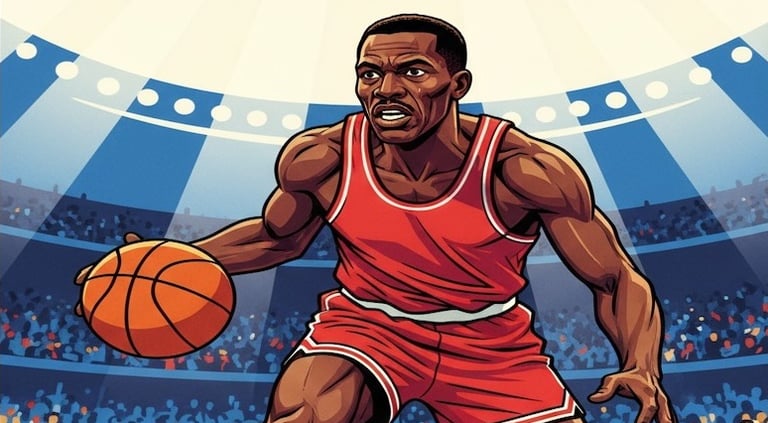FREE AI Analytics Tool for Health Reports and Scans available.
The Secret to Longevity: How Top Athletes Over 40 Defy Age
Ever wondered how legends like LeBron James and Venus Williams compete at the highest level after 40? Discover the secrets to their incredible longevity, from cutting-edge nutrition and recovery strategies to smarter training methods.
FITNESS AND EXERCISE
10/11/20253 min read


How Do Top Athletes Over 40 Stay in Peak Condition?
I remember watching my favourite athlete in their prime, thinking, “This is what peak performance looks like.” And then, a decade or two later, seeing them still on the court, on the field, or in the ring, looking just as good—or even better. It’s enough to make you scratch your head and wonder, "What do they know that the rest of us don't?"
The common belief is that an athlete's career is a short, explosive burst that ends around age 30. But a new generation of sports legends is completely rewriting that narrative. From LeBron James dominating the NBA into his 40s to Venus Williams still competing in Grand Slams, these athletes are proving that age is not a career-ender. Their secret isn’t a magical pill or a Fountain of Youth; it’s a meticulous, holistic approach to their bodies as both a high-performance machine and a long-term investment.
The strategies they employ are a masterclass in modern athletic science, focusing on three key areas: smarter training, relentless recovery, and precision nutrition.
Training: Quality Over Quantity
The days of pounding the pavement or lifting the heaviest weights just for the sake of it are over, especially for older athletes. As the body ages, the risk of injury from high-impact, high-volume training increases. Top athletes over 40 shift their focus from raw intensity to calculated efficiency.
For someone like LeBron James, this means a rigorous but highly strategic training routine. While he still has explosive workouts, a significant portion of his regimen is dedicated to injury prevention and muscle maintenance through things like yoga, resistance bands, and targeted core exercises. This kind of "smarter" training helps him maintain strength and flexibility without the joint-damaging impact of old-school methods.
This is a common thread among elite athletes who last long in their career; according to a 2018 study in Frontiers in Physiology, athletic performance decline after age 70 is much more pronounced than in the 40-70 age range, with different patterns of decline depending on the sport's specific demands. This emphasizes the importance of a tailored and preventative approach to training.
Recovery: The New Frontier of Performance
When you're younger, you can get away with a few hours of sleep and be back at 100% the next day. For the over-40 athlete, recovery is no longer an afterthought—it's the most critical part of their job. They treat sleep with the same importance as a high-stakes game.
LeBron James's trainer, Mike Mancias, has often said that sleep is the most important part of his recovery. James reportedly aims for 8-9 hours of sleep a night, viewing it as the body’s ultimate reset button. Beyond sleep, they embrace a suite of modern recovery tools:
Cryotherapy and Ice Baths: To reduce inflammation and muscle soreness.
Massage and Bodywork: To increase blood flow and release tension.
Compression Garments: To aid circulation and reduce swelling.
Even Venus Williams, who has been competing professionally since the 1990s, admits that taking rest days was a "foreign concept" to her until she was around 35. Now, she makes it a priority, understanding that a rested body performs better and is less prone to injury. The investment in recovery is an investment in their career.
Nutrition: Fueling the Machine
Our metabolism changes as we age, and what worked for a 20-year-old athlete simply won't cut it for someone in their 40s. These veterans become meticulous about their diet, often adopting an anti-inflammatory, high-protein diet to combat the natural aging process.
They focus on whole, nutrient-dense foods that help reduce inflammation, which is a key contributor to pain and joint stiffness. Protein intake becomes even more critical to counteract sarcopenia, the age-related loss of muscle mass. A study published in the British Journal of Sports Medicine found that former US Olympic athletes lived an average of 5.1 years longer than the general population, a longevity advantage largely attributed to a lower risk of cardiovascular disease and cancer, both of which are significantly influenced by diet and exercise.
What’s truly fascinating is the number of older athletes who are now embracing plant-based or semi-plant-based diets. They're not just eating to get through a game; they're eating to heal their bodies from the inside out.
So, when you see a 40-something athlete still performing at an elite level, remember that it's not a fluke. It's the result of years of dedication and an intelligent, evolving strategy. They've learned that the key to longevity isn't just about pushing harder, but about training smarter, recovering better, and eating with a purpose.
What do you think is the most surprising secret to their success?
Disclaimer:
This article is for informational purposes only and does not constitute medical advice. Please consult with a healthcare professional before making any changes to your diet, exercise, or lifestyle routine.

Address
Blk 8 Cantonment Close
SIngapore